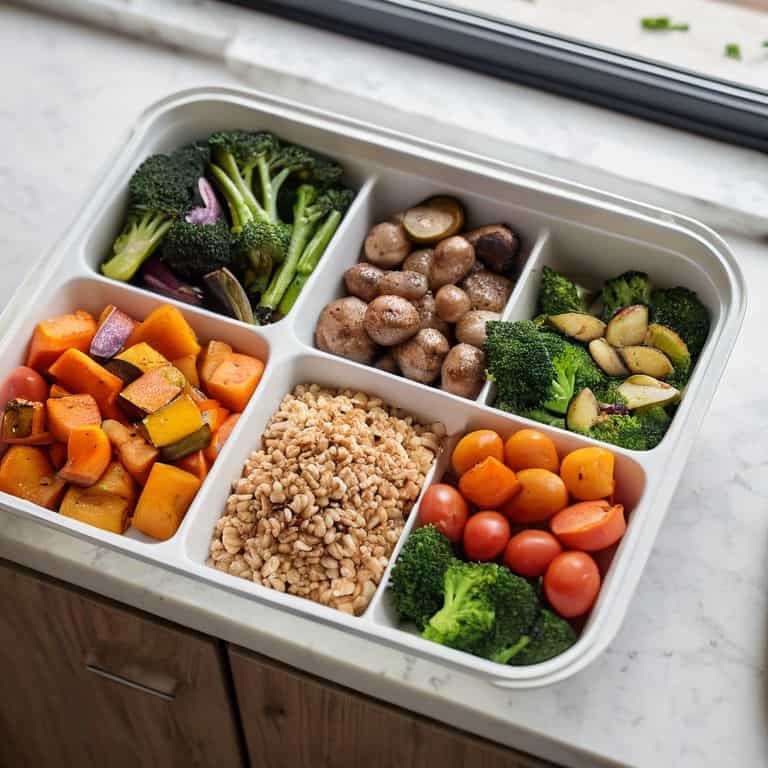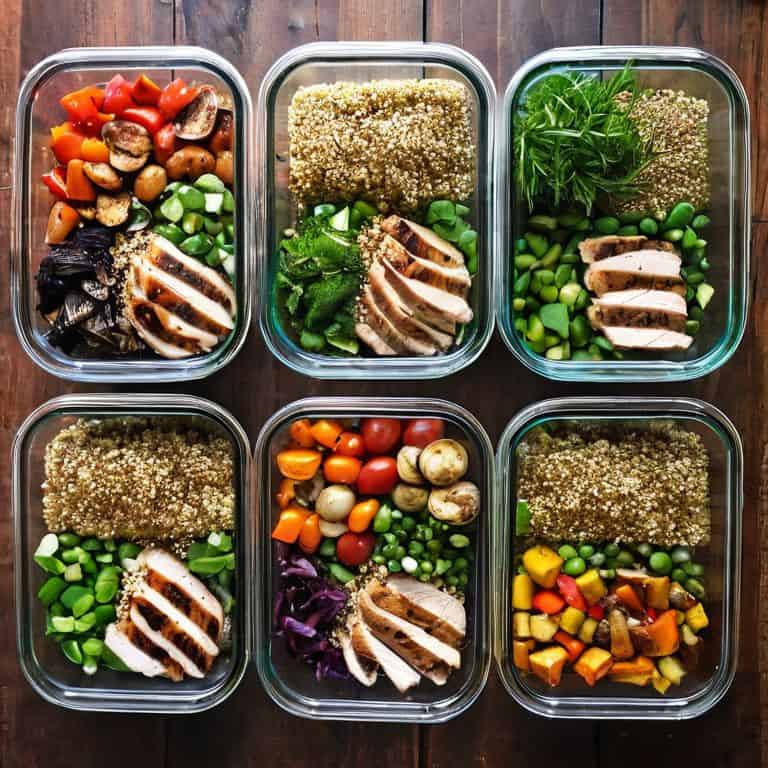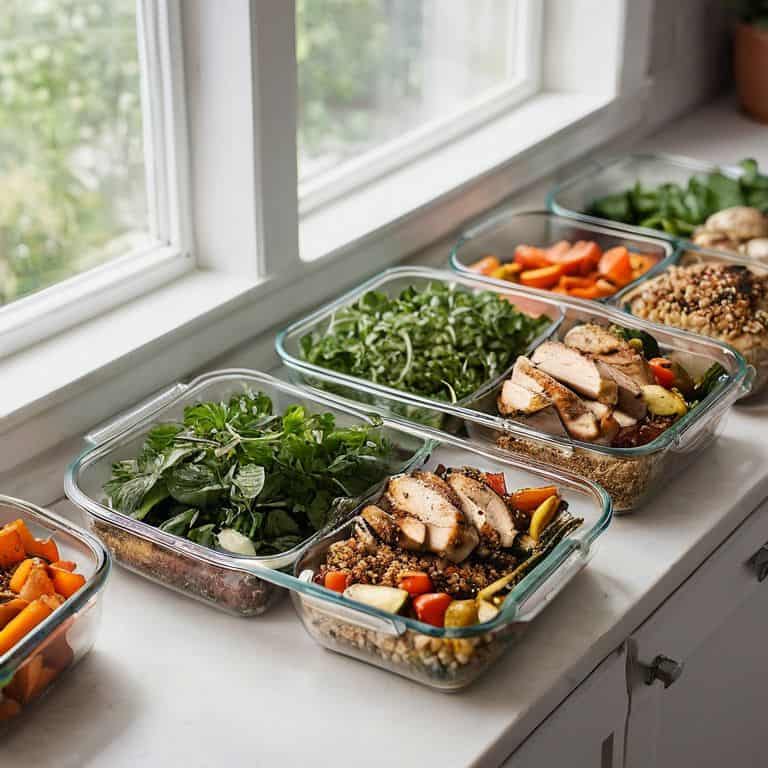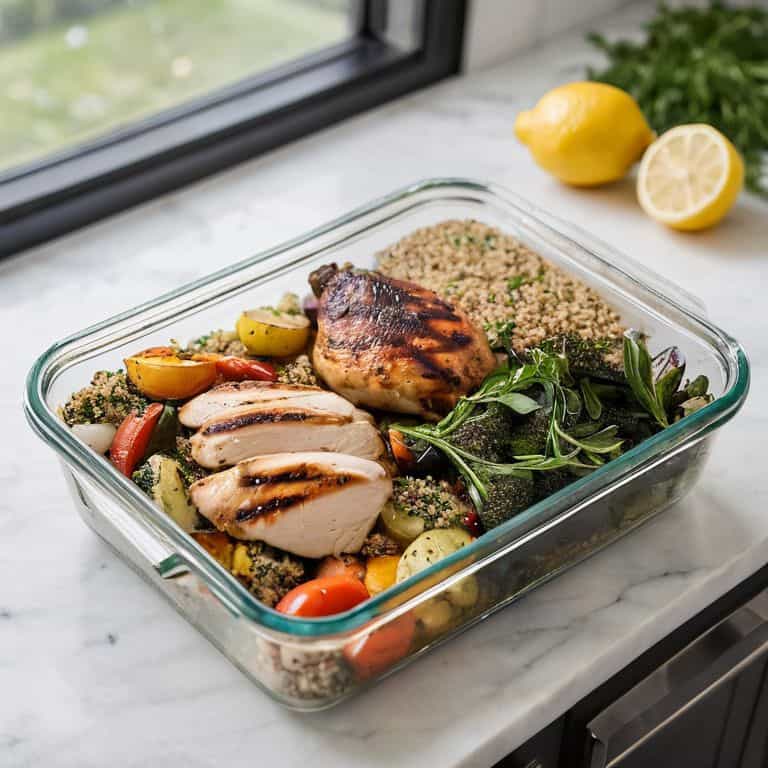As a former bush pilot, I’ve had my fair share of meal prep mishaps while flying over the Alaskan wilderness. But one thing I’ve learned is that how to keep meal prep fresh all week is not just about throwing some leftovers in a container and hoping for the best. In fact, I’ve found that most people’s approach to meal prep is like navigating through a storm without a flight plan – it’s a recipe for disaster. The common myth that meal prep has to be boring and unappetizing is just that, a myth.
So, what if I told you that with a few simple tweaks, you can enjoy delicious, fresh meals all week long? In this article, I’ll share my no-nonsense advice on how to keep meal prep fresh all week, from planning and preparation to storage and reheating. You’ll learn how to create a flight plan for your meals, ensuring that you stay on track and avoid the pitfalls of stale, unappetizing food. By the end of this guide, you’ll be equipped with the knowledge and skills to keep your meal prep fresh, delicious, and exciting all week long.
Table of Contents
Guide Overview: What You'll Need

Total Time: 30 minutes to 1 hour
Estimated Cost: $10 – $30
Difficulty Level: Easy
Tools Required
- Airtight Containers (various sizes)
- Labels and Markers (for labeling and dating containers)
- Refrigerator (for storing prepped meals)
- Freezer (optional for longer storage)
- Measuring Cups and Spoons (for portion control)
Supplies & Materials
- Fresh Ingredients (based on meal plan)
- Ziplock Bags (for portioning ingredients)
- Ice Packs (for keeping items cool during transport)
- Thermally Insulated Bags (for transporting meals)
- Water (for staying hydrated)
Step-by-Step Instructions
- 1. First, let’s start with the basics: meal prep planning. Before you even begin cooking, take some time to plan out your meals for the week. Consider your schedule, dietary restrictions, and personal preferences. I like to think of it as filing a flight plan – you need to know where you’re going and how you’ll get there. Make a list of the meals you want to prep, and then create a grocery list to match.
- 2. Next, it’s time to shop smart. When you’re at the grocery store, try to buy ingredients that are fresh and in season. Not only will they taste better, but they’ll also last longer. Think of it like checking the weather forecast before a flight – you want to know what conditions you’ll be facing. Choose produce that’s firm, colorful, and free of blemishes, and opt for proteins that are frozen or have a long shelf life.
- 3. Now that you have your ingredients, it’s time to start cooking. _Portion control_ is key when it comes to meal prep, so try to cook in bulk and then divide your meals into individual portions. This will help prevent food from going bad and make it easier to grab a meal on the go. I like to use containers that are airtight and microwave-safe, making it easy to reheat and eat.
- 4. Once you’ve cooked and portioned out your meals, it’s time to think about storage and reheating. Make sure you’re using containers that are designed for the type of food you’re storing – for example, glass containers are great for salads, while plastic containers are better for soups. When it comes time to reheat, try to use the microwave or oven instead of the stovetop, as this will help prevent food from drying out.
- 5. To keep your meals fresh throughout the week, try to label and date each container. This will help you keep track of what you have and how long it’s been in the fridge. I like to use a Sharpie to label each container with the date and contents, and then store them in the fridge or freezer in a way that makes sense – for example, meals that need to be eaten soonest are stored in the front.
- 6. Another key to keeping meal prep fresh is to mix it up. Try to vary the types of meals you’re prepping from day to day, so you don’t get bored with the same old thing. This will also help prevent food from going stale – if you’re eating the same meal every day, you’re more likely to get tired of it and let it go to waste. I like to think of it like flying a different route each day – it keeps things interesting and prevents boredom.
- 7. Finally, don’t be afraid to get creative with your meal prep. Try new recipes, experiment with different ingredients, and don’t be afraid to make mistakes. Meal prep is all about finding what works for you and making it a part of your routine, so don’t be discouraged if it takes a few tries to get it right. And remember, just like flying, meal prep is all about staying flexible – things don’t always go as planned, but with a little practice and patience, you’ll be a pro in no time.
Navigating Meal Prep Skies

As we navigate the skies of meal prep, it’s essential to consider healthy meal prep ideas for the week that cater to our lifestyle and dietary needs. This involves planning and preparing freezer friendly meal prep recipes that can be easily reheated without compromising on taste or nutrition. By doing so, we can ensure that our meals remain fresh and enjoyable throughout the week.
When it comes to reheating meal prep, tips for reheating meal prep safely are crucial to avoid foodborne illnesses. It’s vital to reheat meals to the recommended internal temperature to ensure food safety. Additionally, using meal prep planning templates can help us stay organized and on track with our meal prep schedule, reducing the likelihood of common meal prep mistakes to avoid.
By adopting these strategies, we can maintain a consistent and healthy meal prep routine. Investing in good quality meal prep container reviews can also make a significant difference in keeping our meals fresh and secure. With a little practice and patience, we can master the art of meal prep and enjoy delicious, hassle-free meals all week long.
Avoiding Turbulence With Freezer Friendly Recipes
When it comes to meal prep, one of the biggest hurdles is keeping dishes fresh and exciting. That’s where freezer-friendly recipes come in – they’re like having a trusty co-pilot who’s got your back. By incorporating dishes that freeze well, you can avoid the turbulence of meal boredom and ensure a smooth flight plan for your taste buds. Consider recipes like chili, stew, or casseroles that can be made in bulk, frozen, and reheated as needed.
These types of dishes are perfect for busy weeks when you need a quick and reliable meal. Simply thaw, reheat, and you’re cleared for takeoff. I like to think of my freezer as a holding pattern for my meals – it keeps everything fresh and ready to go, so I can focus on navigating the rest of my week with ease.
Clearing Runways for Healthy Meal Prep Ideas
As we continue to navigate the skies of meal prep, it’s essential to clear the runways for healthy ideas. Just like a pilot needs a clear path for takeoff, we need to eliminate obstacles that prevent us from achieving our meal prep goals. This means getting rid of unhealthy snacks and ingredients that can derail our progress. By doing so, we can create a smooth runway for introducing new, nutritious meals into our routine.
By clearing the runways, we can take off with confidence, exploring new recipes and ingredients that will keep our meals fresh and exciting. Just as a flight plan requires regular check-ins and adjustments, our meal prep plan should be flexible and open to new ideas, ensuring we stay on course and maintain a healthy, balanced diet.
Flying High with Freshness: 5 Key Tips to Keep Meal Prep Fresh All Week
- Plan Your Flight Plan: Create a weekly meal prep schedule to ensure you’re prepared for the days ahead, just like filing a flight plan before takeoff
- Pack for Success: Invest in airtight, microwave-safe containers to keep your meals fresh and ready for reheating, much like securing cargo in the hold of a plane
- Fuel for the Journey: Incorporate a variety of ingredients to keep your meals interesting and nutritious, just as a plane needs the right fuel mixture to stay airborne
- Navigate the Weather: Be prepared for changes in your schedule by having a backup plan, such as freezer-friendly meals that can be easily thawed and reheated, similar to how pilots adapt to changing weather conditions
- Maintain Your Aircraft: Regularly clean and sanitize your meal prep containers and utensils to prevent the spread of bacteria and keep your meals fresh, just as a pilot performs routine maintenance on their aircraft to ensure safe flight operations
Key Takeaways for a Fresh Meal Prep Journey
Plan your meal prep like a flight plan, mapping out your week’s meals in advance to ensure a safe and fresh landing every day
Pack your meals like a bush pilot packs for a flight, using the right containers and storage techniques to keep food fresh and ready for takeoff
Be prepared to navigate changes in your schedule, just like a pilot adapts to changing weather conditions, by having a list of freezer-friendly recipes and healthy meal ideas to fall back on
Staying on Course
Just like plotting a steady flight path, keeping meal prep fresh all week is about consistency, preparation, and a little creativity – by doing so, you’ll avoid the turbulence of last-minute meals and land smoothly on a healthier lifestyle.
Daniel Sato
Landing Safely with Fresh Meal Prep

As we touch down on our meal prep journey, let’s recap the essential steps to keep your meals fresh all week. We’ve covered the importance of clearing runways for healthy meal prep ideas, which involves planning and preparing a variety of dishes in advance. We’ve also navigated through avoiding turbulence with freezer-friendly recipes, ensuring that our meals remain fresh and ready to go at a moment’s notice. By following these simple yet effective strategies, you’ll be well on your way to enjoying delicious, healthy meals every day, no matter what’s on your schedule.
As you embark on your own meal prep adventure, remember that consistency is key. With a little practice and patience, you’ll be soaring to new heights in no time, enjoying the freedom and flexibility that comes with having a steady supply of fresh, healthy meals at your fingertips. So why not take to the skies and give meal prep a try? With these fundamentals in place, you’ll be cleared for takeoff and ready to navigate the week with confidence and enthusiasm.
Frequently Asked Questions
What are some common mistakes to avoid when storing meal prep in the refrigerator to keep it fresh?
When storing meal prep in the fridge, beware of cross-contamination and overcrowding. Label and date each container, and keep them sealed to prevent moisture and other flavors from affecting your meals. Think of it like maintaining a safe altitude – give your food some breathing room to ensure a smooth flight to freshness.
How can I prevent meal prep from becoming dry or soggy after a few days?
To avoid meal prep turning dry or soggy, I recommend using the right storage containers and portion control. Think of it like fuel management in flight – you want to balance your resources for a smooth ride. For example, separating ingredients and using airtight containers can help maintain freshness, just like how a well-planned flight route avoids turbulence.
Are there any specific containers or packaging materials that are best for maintaining freshness during meal prep?
When it comes to containers, I’m a fan of airtight, BPA-free ones – they’re like having a pressurized cabin for your food. Glass or plastic, they keep the freshness in and the air out. Think of them as your meal prep’s instrument landing system, guiding you to a safe and fresh arrival.
